Related Research Articles

Dance is a performing art form consisting of sequences of movement, either improvised or purposefully selected. This movement has aesthetic and often symbolic value. Dance can be categorized and described by its choreography, by its repertoire of movements, or by its historical period or place of origin.
Jazz dance is a performance [dance] and style that in the United States arose in the mid 20th century. Jazz dance may allude to vernacular jazz or to Broadway or dramatic jazz. The two types expand on African-American vernacular styles of dance that arose with jazz music. Vernacular jazz dance incorporates ragtime moves, Charleston, Lindy hop and mambo. Popular vernacular jazz dance performers include The Whitman Sisters, Florence Mills, Ethel Waters, Al and Leon, Frankie Manning, Norma Miller, Dawn Hampton, and Katherine Dunham. Dramatic jazz dance performed on the show stage was promoted by Jack Cole, Bob Fosse, Eugene Louis Faccuito, and Gus Giordano.
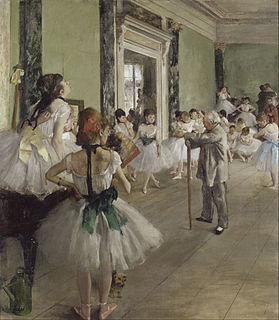
Ballet is a type of performance dance that originated during the Italian Renaissance in the fifteenth century and later developed into a concert dance form in France and Russia. It has since become a widespread and highly technical form of dance with its own vocabulary. Ballet has been influential globally and has defined the foundational techniques which are used in many other dance genres and cultures. Various schools around the world have incorporated their own cultures. As a result ballet has evolved in distinct ways.

Choreography is the art or practice of designing sequences of movements of physical bodies in which motion or form or both are specified. Choreography may also refer to the design itself. A choreographer is one who creates choreographies by practicing the art of choreography, a process known as choreographing. Choreography is used in a variety of fields, including ballet, opera, musical theatre, cheerleading, cinematography, gymnastics, fashion shows, ice skating, marching band, show choir, theatre, synchronized swimming, cardistry, video game production, and animated art. In the performing arts, choreography applies to human movement and form. In dance, choreography is also known as dance choreography or dance composition.
Dance improvisation is the process of spontaneously creating movement. Development of movement material is facilitated through a variety of creative explorations including body mapping through levels, shape and dynamics schema.

Contemporary dance is a genre of dance performance that developed during the mid-twentieth century and has since grown to become one of the dominant genres for formally trained dancers throughout the world, with particularly strong popularity in the U.S. and Europe. Although originally informed by and borrowing from classical, modern, and jazz styles, it has come to incorporate elements from many styles of dance. Due to its technical similarities, it is often perceived to be closely related to modern dance, ballet, and other classical concert dance styles.
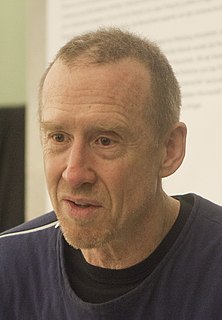
William Forsythe is an American dancer and choreographer resident in Frankfurt am Main in Hesse, Germany. He is known internationally for his work with the Ballet Frankfurt (1984–2004) and The Forsythe Company (2005–2015). Recognized for the integration of ballet and visual arts, which displayed both abstraction and forceful theatricality, his vision of choreography as an organizational practice has inspired him to produce numerous installations, films, and web-based knowledge creation, incorporating the spoken word and experimental music.
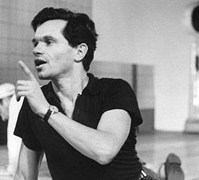
Michael Kidd was an American film and stage choreographer, dancer and actor, whose career spanned five decades, and staged some of the leading Broadway and film musicals of the 1940s and 1950s. Kidd, strongly influenced by Charlie Chaplin and Léonide Massine, was an innovator in what came to be known as the "integrated musical", in which dance movements are integral to the plot.
Postmodern dance is a 20th century concert dance form that came into popularity in the early 1960s. While the term "postmodern" took on a different meaning when used to describe dance, the dance form did take inspiration from the ideologies of the wider Postmodern movement, which "sought to deflate what it saw as overly pretentious and ultimately self-serving modernist views of art and the artist" and was, more generally, a departure from modernist ideals. Lacking stylistic homogeny, Postmodern dance was discerned mainly by its anti-modern dance sentiments rather than by its dance style. The dance form was a reaction to the compositional and presentational constraints of the preceding generation of modern dance, hailing the use of everyday movement as valid performance art and advocating for unconventional methods of dance composition.
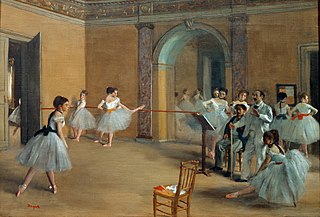
Classical ballet is any of the traditional, formal styles of ballet that exclusively employ classical ballet technique. It is known for its aesthetics and rigorous technique, its flowing, precise movements, and its ethereal qualities.

Shen Wei is a Chinese-American choreographer, painter, and director who resides in New York City. Widely recognized for his defining vision of an intercultural and interdisciplinary mode of movement-based performance, Shen Wei creates original works that employ an assortment of media elements, including dance, painting, sound, sculpture, theater and video. Frequently, critics have commented on his innovative blend of Asian and Western sensibilities, as well as his syncretic approach to performance art.
Lyrical dance is a dance style that embodies various aspects of ballet, jazz, acrobatics, and modern dance. According to Jennifer Fisher, lyrical dance is “strongly associated with clearly displayed emotional moods, fast-moving choreographic strategies, emphasis on virtuosic display, illustration of song lyrics, and, in group form, exact unison.” The style is usually danced at a faster pace than ballet but not as fast as jazz. Lyrical dance is a category typically found in dance competitions.
Performing arts – are art forms where the participant engages in a physical performance using their body, voice, language, or use of specific equipment for entertainment purposes.
American avant-garde composer John Cage (1912–1992) started composing pieces for solo prepared piano around 1938–40. The majority of early works for this instrument were created to accompany dances by Cage's various collaborators, most frequently Merce Cunningham. In response to frequent criticisms of prepared piano, Cage cited numerous predecessors. In the liner notes for the very first recording of his most highly acclaimed work for prepared piano, Sonatas and Interludes, Cage wrote: "Composing for the prepared piano is not a criticism of the instrument. I'm only being practical." This article presents a complete list of Cage's works for prepared piano, with comments on each composition. All of Cage's indeterminate works for unspecified forces can also be performed on or with Prepared Piano.

Acro dance is a style of dance that combines classical dance technique with precision acrobatic elements. It is defined by its athletic character, its unique choreography, which seamlessly blends dance and acrobatics, and its use of acrobatics in a dance context. It is a popular dance style in amateur competitive dance as well as in professional dance theater and in contemporary circus productions such as those by Cirque du Soleil. This is in contrast to acrobatic, artistic and rhythmic gymnastics, which are sports that employ dance elements in a gymnastics context under the auspices of a governing gymnastics organization and subject to a Code of Points. Acro dance is known by various other names including acrobatic dance and gymnastic dance, though it is most commonly referred to simply as acro by dancers and dance professionals.
Lucinda Childs is an American postmodern dancer/choreographer and actress. Her compositions are known for their minimalistic movements yet complex transitions. Childs is most famous for being able to turn the slightest movements into intricate choreography. Her use of patterns, repetition, and dialect has caused her to have a unique style of choreography that is often imitated for its ability to experiment.
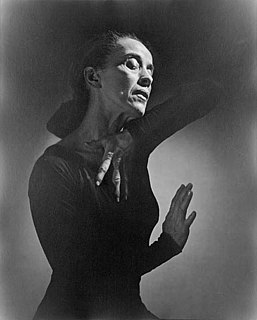
Modern dance is a broad genre of western concert or theatrical dance which included dance styles such as ballet, folk, ethnic, religious, and social dancing; and primarily arose out of Europe and the United States in the late 19th and early 20th centuries. It was considered to have been developed as a rejection of, or rebellion against, classical ballet, and also a way to express social concerns like socioeconomic and cultural factors.
In Australia, calisthenics is a team-based competitive performing art taking elements of rhythmic gymnastics and ballet combined with a strong emphasis on theatricality, costume, dance and musical interpretation. Since the 1950s Calisthenics has been an entirely female art form, however males have recently been re-introduced in the younger age groups. The art form was created entirely in Australia and can be easily differentiated from traditional calisthenics by its focus on competition and choreographed theatrical performance instead of simple synchronized exercise. The word itself comes from the Greek words for beauty and strength. Calisthenics is currently practiced in all states except Tasmania.

Graham technique is a modern dance movement style and pedagogy created by American dancer and choreographer Martha Graham (1894–1991). Graham technique has been called the "cornerstone" of American modern dance, and has been taught worldwide. It is widely regarded as the first codified modern dance technique, and strongly influenced the later techniques of Merce Cunningham, Lester Horton, and Paul Taylor.

Belarusian traditional dance is a form of stage dance known for its originality. The history of Belarus and efforts to preserve Belarusian traditions have shaped the dances in use today, which have many ancient and archaic elements. These dances started to form in the 14th century, and originated in East Slavic rites. In the middle of the 19th century, traditional folk dancing began to merge with quadrilles and polkas from Western Europe.
References
- ↑ "Glossary (dance)". UCI Wiki. Electronic Educational Environment (EEE). Retrieved 2012-02-19.